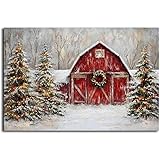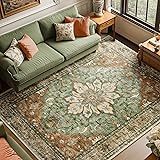Have you ever walked into a kitchen, perhaps your own, and felt a subtle sense of unease or frustration? Maybe the lighting just wasn’t right, a cabinet pull snagged your sleeve, or you found yourself on your hands and knees, rummaging desperately for a pot in the back of a dark cupboard. These seemingly small inconveniences often stem from common kitchen design mistakes – errors that, once identified, are surprisingly easy to fix, turning a frustrating space into a functional dream. The accompanying video offers a fantastic starting point, highlighting three key areas where many homeowners and renters often go astray. Let’s delve deeper into these pitfalls and explore comprehensive solutions to elevate your culinary space.
1. Overcoming the “Dinky Pendant” Problem: Elevating Kitchen Lighting Design
One of the most frequent kitchen design mistakes we see involves lighting, specifically the choice of pendant lights over a kitchen island. The video rightly points out the tendency to opt for three to five smaller, often underwhelming, pendants. While the intention might be to create ample light, the actual result is often visually cluttered and lacks impact.
Why Small Pendants Fall Short in Kitchen Design
Firstly, proportionality is key in any design. A cluster of “dinky” pendants can look out of scale with the size of your kitchen island, especially if it’s a generous one. Instead of enhancing the space, they can make it feel smaller or busier. Secondly, small pendants often don’t provide sufficient illumination for the task at hand. While they might cast some light, they rarely deliver the bright, focused light needed for food prep, reading recipes, or even just general ambience.
The Statement Solution: Embracing Oversized Pendants
The solution is refreshingly simple and impactful: embrace one or two oversized pendants. This design choice offers numerous benefits beyond just fixing a common kitchen design mistake:
- Visual Impact: A larger pendant becomes a focal point, drawing the eye and adding a sophisticated, intentional touch to your kitchen. It transforms a utilitarian fixture into a piece of art.
- Improved Lighting: Oversized pendants typically house larger bulbs or multiple light sources, providing superior illumination across your island workspace. This is crucial for both safety and functionality.
- Streamlined Aesthetics: Fewer, larger elements create a cleaner, less cluttered look. This minimalist approach can make your kitchen feel more spacious and modern.
- Scale and Balance: Properly sized pendants create a harmonious relationship with your kitchen island, making the entire space feel balanced and well-designed.
When selecting an oversized pendant, consider its style, material, and the overall aesthetic of your kitchen. Whether you prefer industrial, farmhouse, modern, or traditional, there’s an oversized pendant that can seamlessly integrate and enhance your existing decor, turning a functional element into a stunning design feature.
2. The Practicality of Hardware: Avoiding Impractical Kitchen Knobs and Latches
Secondly, a frequently overlooked area where homeowners make significant kitchen design mistakes is in their choice of cabinet hardware. The video specifically calls out T-shaped knobs and latches, a popular trend, especially on social media. While they might appear sleek and modern, their impracticality can quickly lead to daily annoyance.
The Hidden Annoyances of Impractical Hardware
The primary complaint, as highlighted, is their tendency to snag clothing. In a bustling, high-traffic area like the kitchen, this isn’t just a minor irritation; it can be a safety hazard. Imagine rushing to grab something and catching your sleeve, potentially spilling hot liquids or dropping fragile items. Beyond snagging, these designs can also:
- Be Difficult to Grip: Especially for those with limited dexterity, a small, flat surface can be harder to grasp than a traditional round knob or a well-designed pull.
- Show Fingerprints and Smudges: Their often minimalist design means every touch leaves a mark, requiring constant cleaning to maintain their “sleek” appearance.
- Lack Durability: Some trendy designs prioritize form over function, leading to hardware that might not withstand the constant use a kitchen demands.
Smart Hardware Solutions for Every Kitchen
Opting for more practical hardware doesn’t mean sacrificing style. There’s a vast array of beautiful and functional options available. Consider:
- Classic Knobs: Round or mushroom-shaped knobs offer an easy, snag-free grip and come in countless finishes and styles to match any decor.
- Pull Handles: These are often the most ergonomic choice, allowing a full hand grip. From contemporary bar pulls to traditional cup pulls, they offer both comfort and aesthetic appeal.
- Integrated or Edge Pulls: For a truly minimalist look without the snagging issue, consider hardware that is recessed into the cabinet or attached to the top or bottom edge of the drawer/door.
For renters, the video offers an invaluable tip: you can often replace existing hardware! Just remember to carefully store the original knobs or latches in a labeled bag. This allows you to personalize your space and fix a frustrating design element, while ensuring you can easily reinstall the originals when you move out, preventing any issues with your landlord. This simple DIY update can significantly improve your daily experience without requiring a full kitchen renovation.
3. The Efficiency of Drawers: Redefining Lower Kitchen Cabinetry
Finally, and perhaps one of the most impactful solutions to common kitchen design mistakes, is prioritizing drawers over traditional lower cabinets. The video succinctly describes the struggle: “getting on your hands and knees fumbling in the dark to try to just find that old pot in the back of your cabinet.” This scenario is all too familiar and highlights a fundamental flaw in many kitchen layouts.
The Pitfalls of Traditional Lower Cabinets
Traditional lower cabinets, while seemingly offering a lot of space, are notorious for creating “dead zones.” Items shoved to the back become inaccessible, forgotten, or simply difficult to retrieve. This leads to:
- Wasted Space: The deeper parts of the cabinet often go unused.
- Poor Organization: Items get stacked, making it hard to find what you need without a major excavation.
- Physical Strain: Bending, kneeling, and reaching into deep cabinets can be uncomfortable, especially for those with mobility issues.
- Lack of Visibility: It’s hard to see what’s in the back, leading to duplicate purchases or expired goods.
Maximizing Storage and Accessibility with Drawers
Opting for drawers, especially full-extension ones, transforms your lower cabinetry into an incredibly efficient storage system. While it often requires a full kitchen renovation to implement, the benefits are well worth the investment:
- Full Accessibility: Drawers pull out completely, bringing the entire contents of the cabinet into view and within easy reach. No more fumbling in the dark!
- Superior Organization: You can easily divide drawers with inserts for cutlery, spices, or cooking utensils. Deep drawers are perfect for pots, pans, small appliances, or even bulk pantry items.
- Ergonomic Design: Everything is accessible from a standing or seated position, reducing bending and straining.
- Increased Storage Capacity: Believe it or not, well-designed drawers can often hold more usable items than traditional cabinets because every inch is accessible.
- Dedicated Zones: You can create specific zones for baking supplies, cleaning products, or even pet food, making your kitchen flow more logically.
Consider different types of drawers: deep drawers for large items, medium drawers for everyday dishes, and shallow drawers for linens or baking sheets. Even a pull-out pantry system can be integrated for dry goods, offering the same accessibility benefits. This thoughtful approach to lower cabinetry design is a game-changer for anyone looking to create a truly functional and enjoyable kitchen.
Addressing these common kitchen design mistakes, from your lighting choices to hardware and storage solutions, can dramatically improve the functionality and aesthetic appeal of your home. A well-designed kitchen is not just about looks; it’s about creating a space that supports your daily life, making cooking and entertaining a joy, not a chore.











